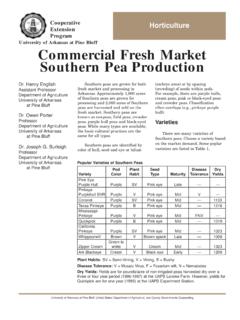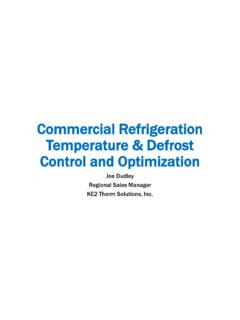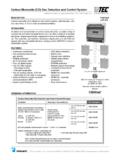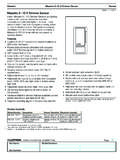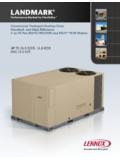Transcription of OPERATING, MAINTAINING & INSTALLING YOUR …
1 Box 2758. Windsor, Nova Scotia, B0N 2T0. Ph. 902-798-2261 Fax: 902-798-2557. E-mail: operating , MAINTAINING & INSTALLING your light . commercial HEAT RECOVERY VENTILATOR. * LEAVE THIS DOCUMENT WITH THE BUILDING OWNER. Specifications, dimensions and ratings may change without notice as a result of ongoing product development and improvements. NU305, NU500, NU600. (Type 362317, & 423023). REVISED April 14, 2008. TABLE OF CONTENTS. 1 HOW THE NU-AIR SYSTEM WORKS ..4. 2 FEATURES & OPERATION ..4. 3 CONTROLS ..6. Standard Dehumidistat (Part#: DSTAT-1) &.. 6. Internal Dehumidistat (Part#: DSTATK-01).
2 6. 2-Speed Control (Part #: 2X605A) .. 6. Windsor Dehumidistat Control (Part#: WIN-1).. 7. Windsor 20 Minute High Speed Timer (Part#: WIN-20) .. 7. Arctic Defrost Mode .. 7. 4 INSTALLATION Installer's Responsibilities .. 7. Installation 8. Standard Issue Items ..8. Other Basic Ductwork .. 8. Ducting from the Weather Hoods ..9. Weather Hoods .. 9. Locating the Weather Hoods ( commercial ) ..9. Locating the Weather Hoods (Residential) ..9. Port 10. Mounting & Noise Control (NU305, NU500) .. 11. Mounting & Noise Control NU600 ..11. Drain Connections .. 12. 5 CONNECTING TO OTHER 6 EXTERNAL CONNECTIONS.
3 13. Furnace Interlock .. 13. Windsor Control (Part#: WIN-1).. 13. Standard Dehumidistat (Part#: DSTAT-1) .. 14. Internal Dehumidistat (Part#: DSTATK01) .. 14. Field Installed Models NU305, NU500 ..14. Factory Installed Models NU600 ..14. Windsor 20 Minute High Speed Timer (Part #: WIN-20) .. 14. Spring Wound 14. Remote On/Off Switching .. 15. 7 BALANCING THE SYSTEM ..15. 8 Filters .. 17. REVISED April 14, 2008. 17. Condensate Drain .. 17. 17. Exterior 18. Diffusers and Ductwork .. 18. 9 ANNUAL SERVICING ..18. 10 TROUBLE Electronic Self-Resetting Fuse:.. 20. Troubleshooting using the PCB light .
4 20. 11 ELECTRICAL NU305, NU500 and NU600 Fan Shut Down Defrost .. 21. NU305, NU500 and NU600 Damper 22. 12 WARRANTY ..23. REVISED April 14, 2008. 1 HOW THE NU-AIR SYSTEM WORKS. This heat recovery ventilator (HRV) provides fresh air to a conditioned space while exhausting an equal amount of stale air. Heat energy is transferred from one air stream to the other within a non-contact cross flow heat exchanger. A. Two forward curve blowers work to bring fresh air into the space and exhaust an equal amount of stale air. B. Incoming fresh air is filtered before flowing through the heat exchange core.
5 C. Stale, humid air flows through the cross-flow heat exchanger and transfers the heat to the incoming fresh air. D. Warm fresh air is distributed through an independent ductwork system or an existing air distribution system. 2 FEATURES & OPERATION. NU305, NU500, and NU600 light commercial HRV. models use microprocessor based control technology. The standard control configurations of these HRV's consist of two speed settings selectable from a remote control. Connection between the HRV and control is achieved through low voltage wiring. Features include: Powerful transformer up to six (6) WIN-20 Timers can be connected in parallel.
6 Field selectable defrost cycle for northern applications. Self-resetting fuse to protect the board against mis-wiring. Variable low speed control HRV low speed can be adjusted between a minimum of 40% and a maximum of 70% of high speed. See below explanation. Optional setting for 220V/50Hz geographic areas. REVISED April 14, 2008 Page 4 of 23. The following sections outline the features and explain the PC board in greater detail. Settings for speed control, defrost, electrical service and fan/motor type are factory set for normal operation and do not require changing. A qualified technician must do any service work done within the electrical panel of the HRV.
7 DIP Switches (Factory Set): An array of four (4) two position switches is located at the top left corner of the board. The "On". position for each switch is labeled and corresponds to down ( towards the board surface). The "Off" position is up or away from the board surface. The switches are labeled 1-4 and their settings determine the following conditions. # 1 Frequency Setting - Set to ON (down) for 60. Hz service. This includes all of North America. Set to OFF (up), for electrical grids using 50 Hz. #2 Defrost Type - ON (down) is for damper/recirc. models. OFF (up) is for fan shut down defrost models.
8 #3 Fan Selector - All light commercial models are set to ON (down). #4 Arctic Mode Selector (Anti-freeze protection) - When the machine is set to operate in arctic mode the amount of time spent in defrost will increase. ON. (down) is the normal defrost cycle position; set to OFF (up) for Arctic defrost. NOTE: Switches are factory pre-set. Only switches # 1 & 4 may require resetting to suit field conditions. Variable Low-speed Motor Control For field adjustment of the low (continuous) ventilation rate, push button switches S1 & S2 are used. These are located on the bottom left of the board.
9 S1 is labeled DEC (decrease) and S2 is labeled INC (increase). Each push of S1 or S2 decreases or increases low speed by increments of 3%. Low speed default is set at 40% of high speed and cannot be lowered beyond this point. Technicians may adjust this up to 70% of high speed when appropriate for the installation. Settings are stored REVISED April 14, 2008 Page 5 of 23. in the board's memory, eliminating the need to reset the speed after a power failure. Defrost Cycles: Fan Shutdown Defrost On FSD machines, the temperature sensor is located in the fresh air stream before the core.
10 When this air is measured to be below freezing, a timed defrost cycle is initiated. The fresh air fan motor is stopped for 4. minutes (both normal and arctic modes). The exhaust fan motor continues to operate, drawing warm air from the building through the core. After 4 minutes, the fresh air fan motor is started again and runs for 20 (normal mode) or 12 (arctic mode) minutes. This cycle is repeated until the temperature of the outdoor air stream is measured to be above freezing. Damper Defrost On dampered models, the temperature sensor is located in the fresh air stream before the core.




